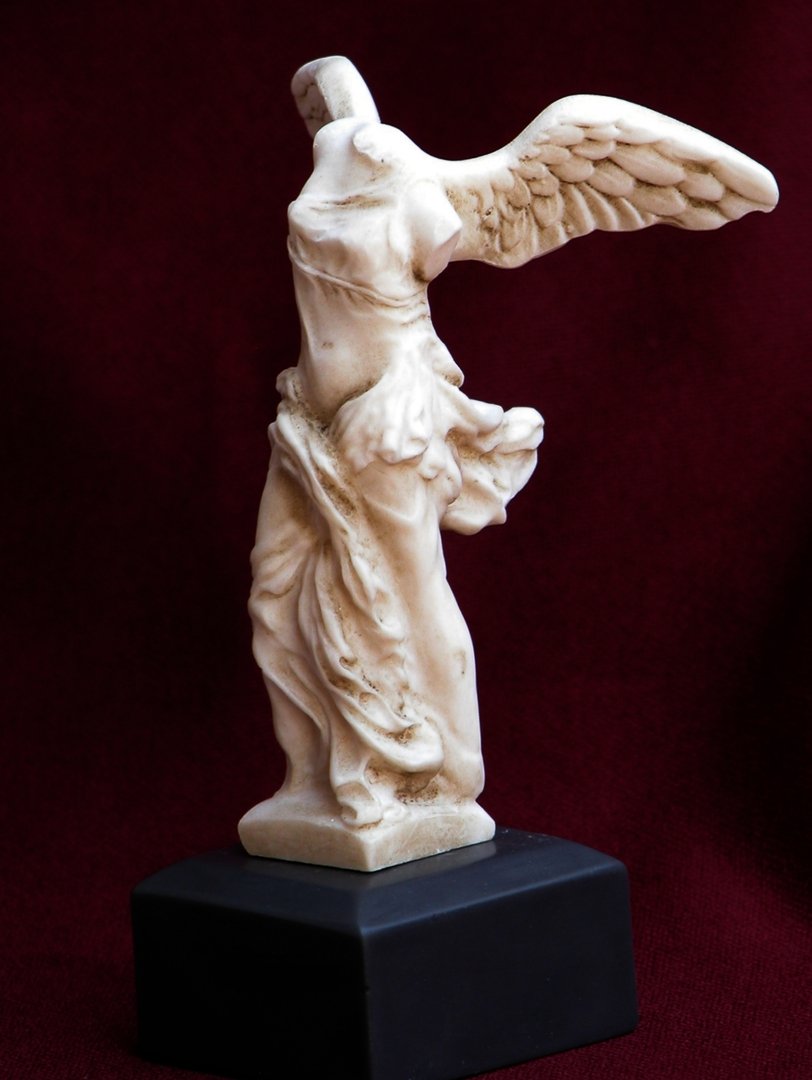 The Victory of Samothrace is a Greek sculpture representing the Goddess Nike, the Goddess of victory. Currently housed in the Louvre Museum in Paris, France, it is on display for visitors. The sculpture is characterized by its headless and armless form, displaying extraordinary beauty.
The Victory of Samothrace is a Greek sculpture representing the Goddess Nike, the Goddess of victory. Currently housed in the Louvre Museum in Paris, France, it is on display for visitors. The sculpture is characterized by its headless and armless form, displaying extraordinary beauty.
On one hand, the story tells that the Goddess Nike is the daughter of the Titan Pallas and Styx. Nike spent her early years among humans, but upon witnessing the wickedness in their hearts and the horrible vices that imprisoned them, she decided to leave the earthly world and return to Mount Olympus. Her story also mentions that her wings were cut off to prevent her from leaving the city.d.
On the other hand, regarding the Greek sculpture, artists, writers, and historians, both experts and novices, consider the Victory of Samothrace the most vivid and perfect representation of Hellenistic art. It is estimated that the piece was created between 220 and 185 BC, but the identity of the artist remains unknown.
The Victory of Samothrace is a full-length Greek sculpture, revealing the sensual female figure of the Goddess on the prow of a ship. The work was carved from white marble, weighs about 30 tons, and measures approximately 5.5 meters in height for the entire monument.
Historians and archaeologists assert that the Victory of Samothrace was commissioned to represent the naval triumph over Antiochus III the Great.
The Greek sculpture was discovered on the island of Samothrace in 1863 by Charles Champoiseau, who was the French consul at the time. Due to his interest in anthropology, Champoiseau decided to explore the ancient temple of the gods in search of historical treasures to offer to Napoleon Bonaparte, known for his love of relics.
In April 1863, Charles sent a letter to the French ambassador in Constantinople, announcing his recent discovery. The letter declared the news as follows: “I have found a statue of winged Victory carved in marble and of colossal proportions. Unfortunately, I have not found the head or arms […]. But the rest is almost intact and has been crafted with an art that none of the Greek works I know equals”.
In 1864, the Victory of Samothrace arrived at the Louvre Museum, where it has been exhibited to this day and is one of the most visited pieces in the museum. Since then, the Greek sculpture has undergone several restoration efforts, with the most comprehensive and exhaustive restoration taking place in 2013.
Reproductions of the sculpture have become increasingly popular, ranging from 3-meter-sized ones adorning gardens and unique spaces to beautifully presented small miniatures and highly faithful reproductions for medium-sized decorations.
You can find reproductions of the Victory of Samothrace in our catalog here:









